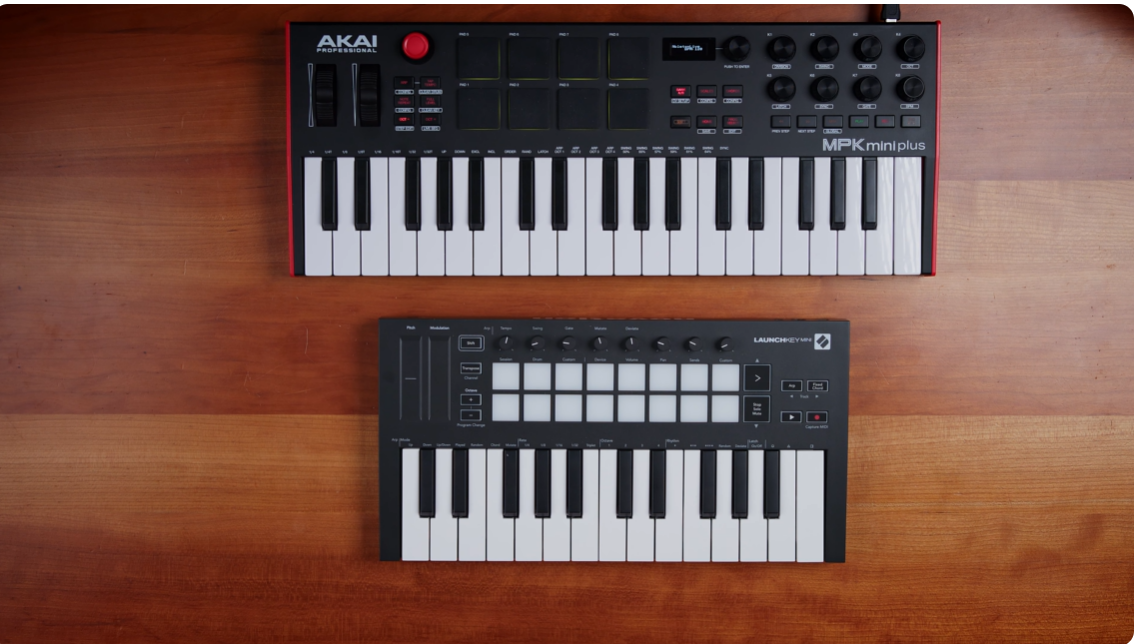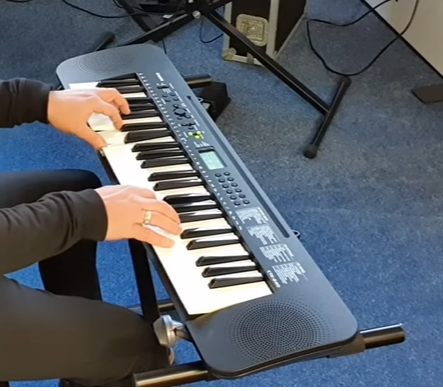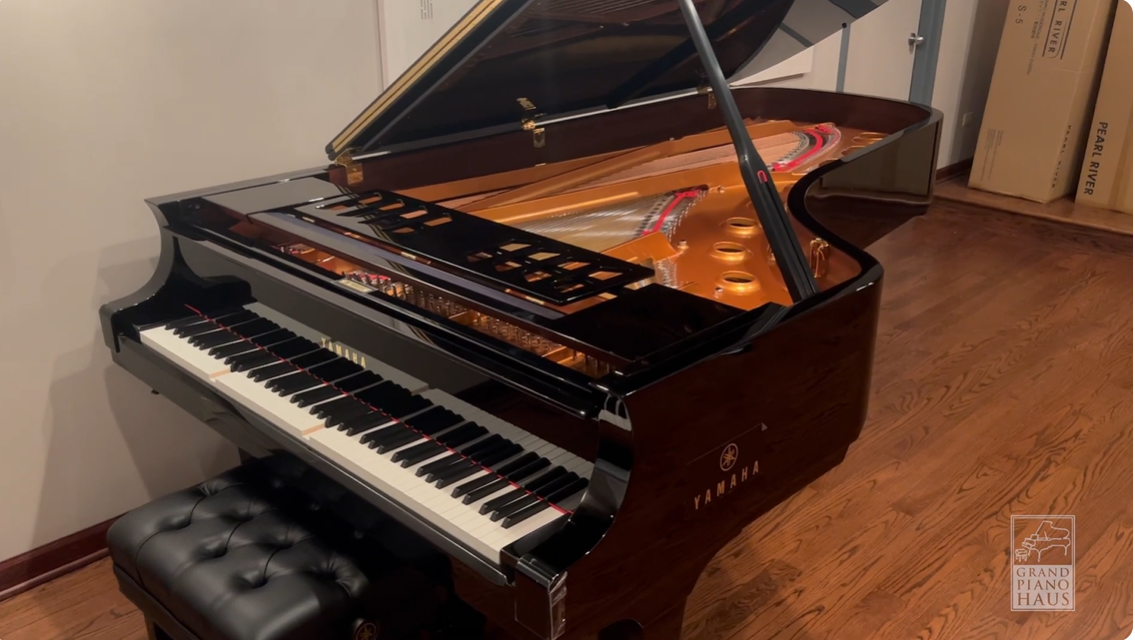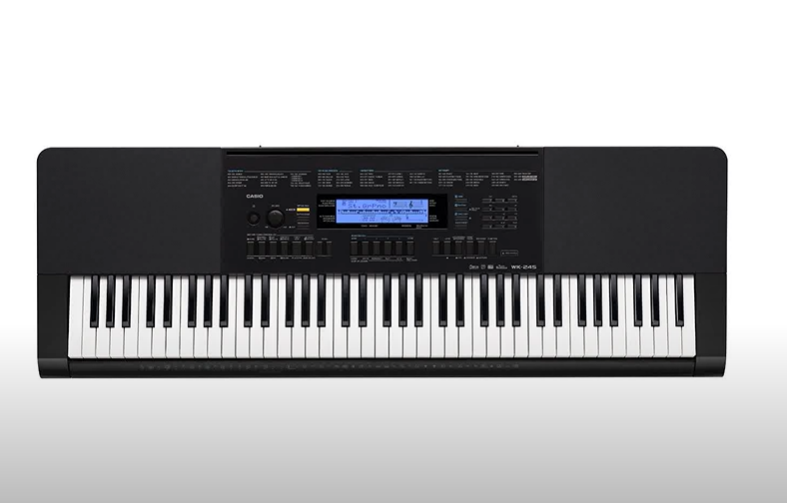Over the hundreds of years that the piano has evolved, the number of keys has changed a lot — from just 32 keys in the earliest pianos to as many as 96 keys on the modern Bösendorfer Imperial. But why does this matter to you when choosing a piano today? Should you care about how many octaves your piano has?
In most cases, a piano features 7 and a quarter octaves.
A typical modern upright, grand, or digital piano offers seven full octaves plus three extra notes at the top — B-flat, B, and C. However, there are some variations, especially among digital pianos, which we’ll explore in this article. Understanding the number of octaves can help you find the right piano that suits your playing style and musical needs.
An octave is a group of eight notes. The word comes from the Latin word “octo,” which means eight—the same reason an octopus is named that way (it has eight legs).
In music, the term “octave” can mean two related but slightly different things: an interval and a scale.
The Octave Scale
An octave scale is a set of eight notes where you move step-by-step through a musical scale until you land on the same note you started with—but one octave higher.
For example, let’s look at the G Major scale:
G, A, B, C, D, E, F♯, G
Here, we start on G, go through all the notes in the G Major scale, and then end on G again. But that final G is not the same as the first—it’s the next G up on the keyboard. That’s what we call going one octave higher.
The Octave Interval
An octave is also a musical interval—the distance between two notes. Just like a fifth means five notes apart, and a fourth means four notes apart, an octave means the two notes are eight steps apart in the scale.
So, when you move from one note to the same note higher up (like C to C or G to G), you’re moving one octave.
Table of Contents
ToggleOctaves on the Piano
On a modern piano, the very lowest note is A. From that point, there are seven more A’s higher up on the keyboard, making a total of seven full A octaves.
Older pianos typically stopped there—just seven octaves in total. But today’s pianos go even further. They include three extra notes above the highest A: B♭, B, and C. So now, a full piano has seven octaves plus three notes.
Why the Piano Became What It Is Today
The piano we know today didn’t appear overnight—it evolved over centuries. It all started with the harpsichord, a popular instrument in the 1600s. The harpsichord itself came from even older instruments like the virginal and the organ. Early harpsichords often had multiple keyboards, but each one covered only about four octaves. So, when the first piano was invented, it naturally had a similar four-octave range.
Over time, the piano went through a long phase of innovation and refinement. By the 1930s, the modern piano design we see today had become the standard. One major reason for this change was musical demand. Composers like Beethoven and Schubert felt creatively restricted by the small number of keys. To meet these growing needs, piano builders began using iron frames instead of wood, making instruments that could support more keys, more strings, and a wider octave range.
Today, most acoustic pianos have 88 keys, which gives them seven and a quarter octaves. There are a few special cases—brands like Fazioli and Bösendorfer have created pianos with extra keys—but those are rare. Nearly every piano made in the last 60 to 70 years follows the 88-key standard, and that’s what most players and composers use around the world.
Modern Piano Variations
Like all musical instruments, the piano continues to evolve. In the last 30 years, one of the biggest changes has been the rise of the digital piano. These instruments come in many shapes and sizes, and not all of them have the traditional 88 keys or seven-octave range. Let’s break down the most common modern piano key sizes and look at the roles each one plays in today’s music world.
Extra Small: 25–37 Keys (2–3 Octaves)

Extra small keyboards are perfect for music producers and electronic musicians. These models don’t produce sound on their own—they’re MIDI controllers with spring-loaded keys, designed to be plugged into a computer via USB or MIDI.
If you’re using software like Cubase, Ableton, or Sibelius, these are compact tools ideal for composing on the go. However, they’re not meant for learning or practicing piano.
🔎 Examples: Korg nanoKey USB MIDI Controller, AKAI LPK25 Laptop Keyboard
Small: 49 Keys (4 Octaves)

A step up in size, 49-key keyboards are still relatively basic but come with built-in sounds and are often marketed to beginners. These are ideal if you’re just starting out or need something portable.
They usually come with spring-loaded action, and while they’re great for testing the waters, you’ll likely outgrow them quickly if you’re serious about learning piano.
🔎 Examples: Casio CTK-240 Portable Keyboard
Medium: 61 Keys (5 Octaves)

61 keys is the standard size for most beginner and intermediate keyboards. It offers a good range for pop, rock, and electronic music, while remaining lightweight and portable.
Many learners and casual musicians use 61-key models, and they’re a staple in home studios and for live performances. If you took lessons as a kid, chances are you started with something like this.
🔎 Examples: Yamaha PSR-F51, Yamaha PSR-E463
Medium/Large: 76 Keys (6½ Octaves)

When you hit 76 keys, you’re looking at keyboards suitable for serious learners and performers. These usually come with touch-sensitive or even semi-weighted keys, providing a more authentic feel for practicing piano technique.
They’re ideal for students in the beginner to intermediate stage and offer a great balance of range and portability. Many also include features like recording functions, lesson modes, and MIDI output.
🔎 Examples: Yamaha Piaggero NP12, Casio WK-240
Large: 85 Keys (7 Octaves)
You won’t see many 85-key pianos today—most modern instruments come with 88—but this size was common in pianos made between 1900 and 1940. These vintage models are great for most music but missing the top 3 notes, which some Debussy, Liszt, or Chopin compositions require.
If you’re playing romantic or impressionist repertoire, these instruments may feel limiting. But for general practice or casual use, they can still be a good fit.
🔎 Examples: Vintage acoustic pianos (search on eBay or local marketplaces)
Standard: 88 Keys (7 Octaves)
The gold standard for pianos and digital pianos. Every modern acoustic piano and most high-end digital models feature 88 keys, covering the full range of A0 to C8.
If you’re planning to stick with piano long-term, this is the size to go for. It allows you to play any genre or piece, from classical to jazz, rock to film scores. Most come with fully weighted keys to simulate the feel of a grand piano.
📘 Want help choosing? Check out our expert guide to the best 88-key digital pianos on the market.
Extra Large: 96 Keys (8 Octaves)

These ultra-rare instruments are built for specialty purposes, such as organ transcriptions or avant-garde compositions. The extra lower and upper keys simulate organ foot pedals or expand the tonal range beyond standard classical limits.
Unless you’re a collector or concert artist, you’ll never need one. But they do exist—just be ready to spend over $200,000.
🔎 Examples: Bösendorfer 290 Imperial
Final Thoughts: Choose for the Future
Whatever size you go with, the most important thing is to choose an instrument that grows with you. While it’s tempting to go for a cheap beginner model, you may end up needing an upgrade within a year if you advance quickly.
Investing in a keyboard with good key action, enough range, and realistic feel will make your musical journey smoother—and far more enjoyable.

